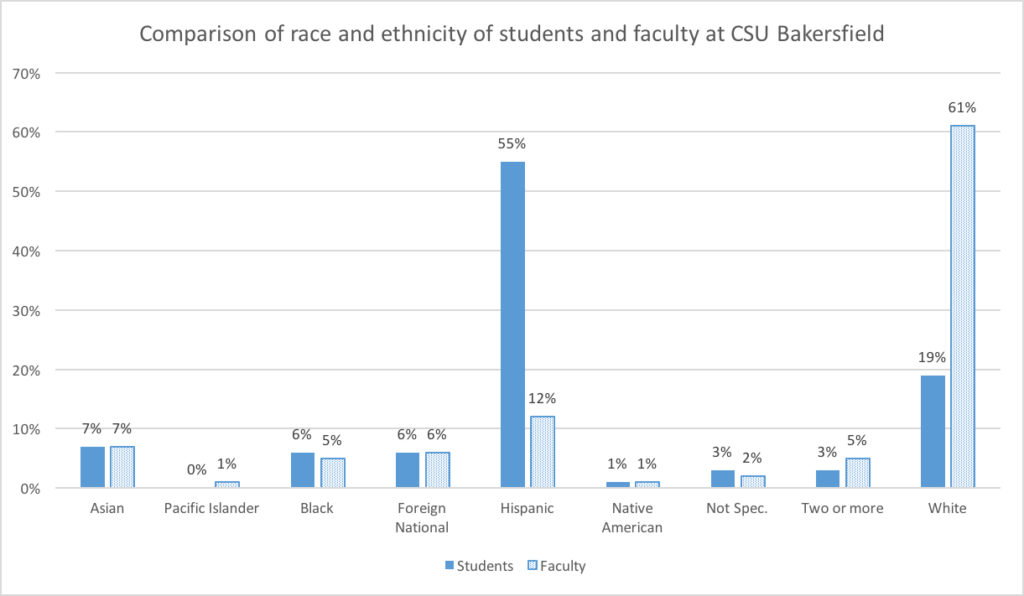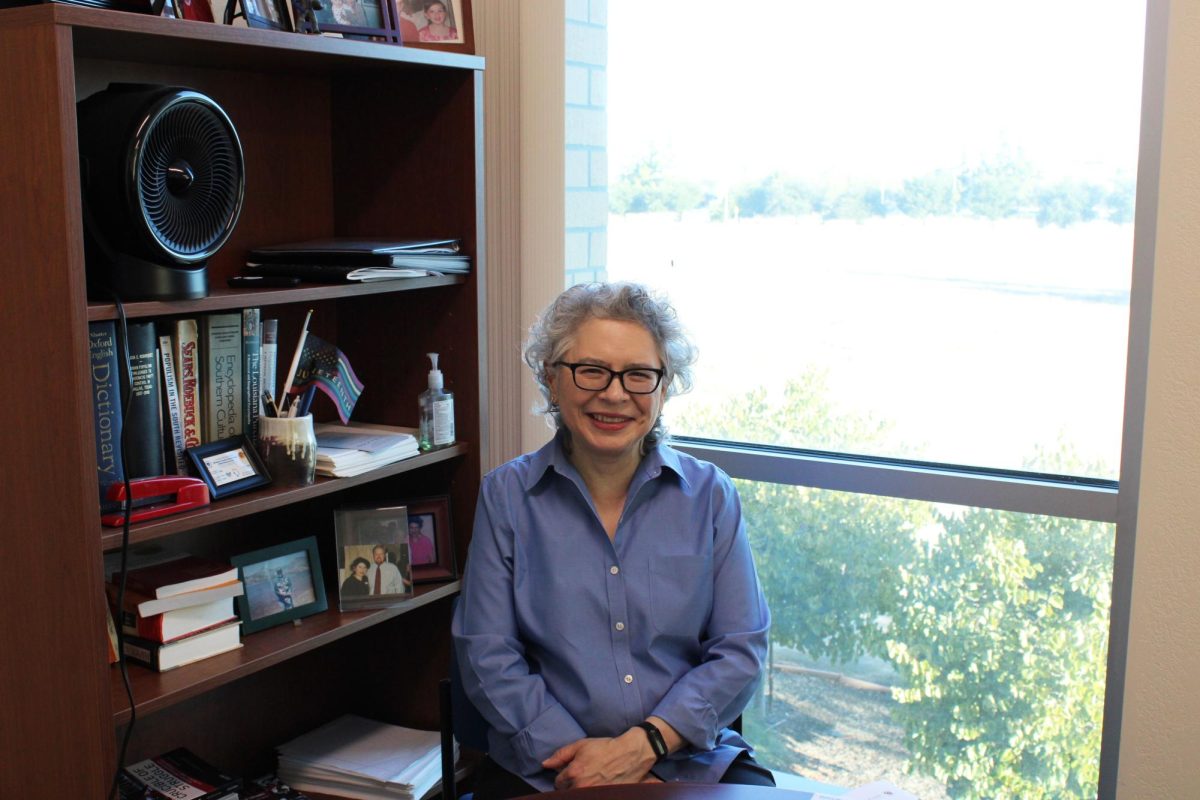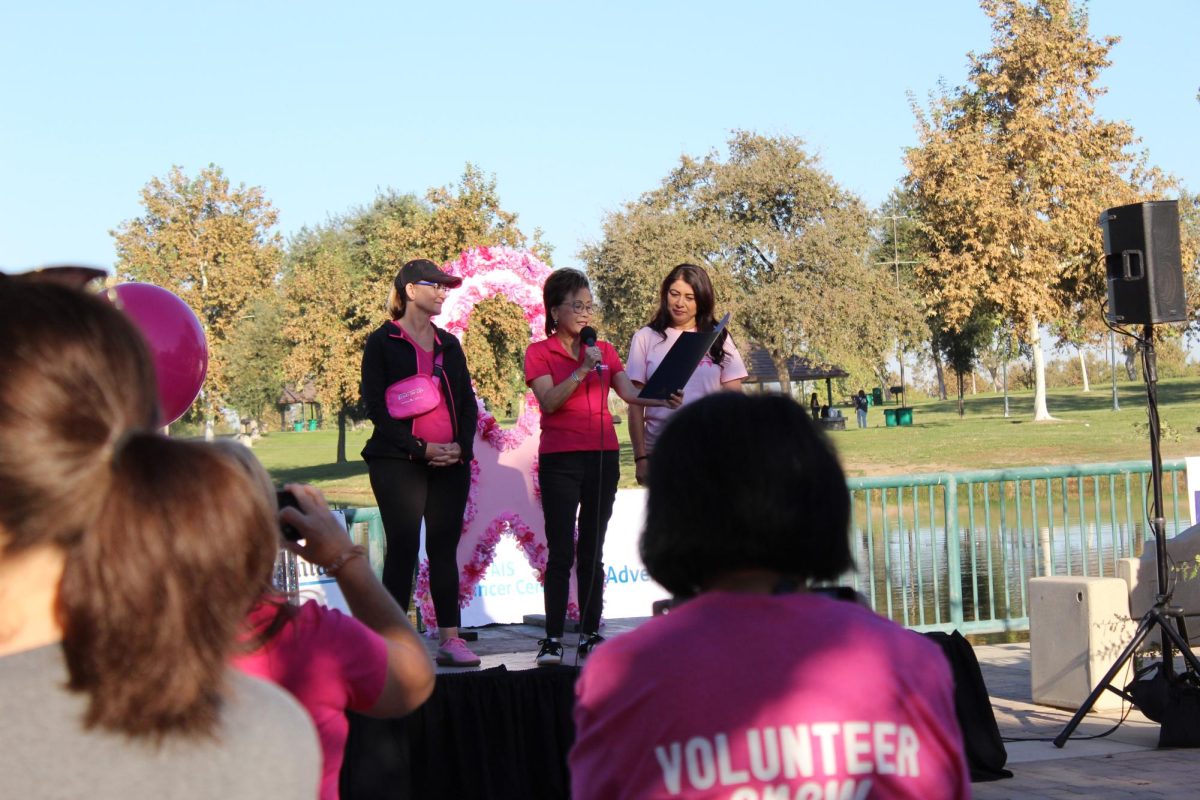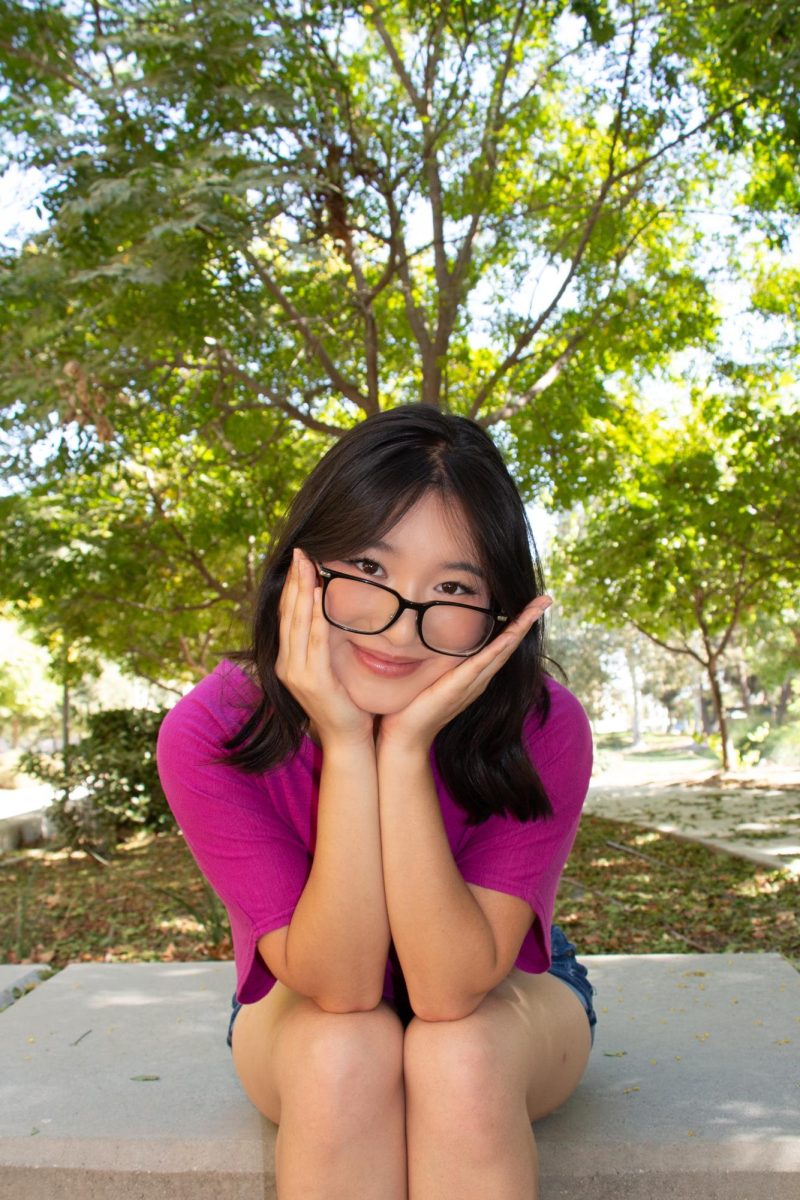By Runa Lemminn
Features Editor
Ask a typical CSU Bakersfield student walking around campus about why student diversity is important, and you’ll most likely get a spontaneously wide range of answers on the topic. Ask about faculty diversity, and you’ll get some hesitation with the answers.
CSUB faculty diversity is not reflective of student diversity.
Some students are just fine with the current diversity levels of CSUB faculty. Jose Nunez, a freshman Sociology major, said he is satisfied with the faculty diversity.
“I have a Russian professor, I have a Hispanic professor, I think it’s fair,” said Nunez.
Other students notice a lack of faculty diversity, but feel apathetic about it.
Fernandez Perez, a sophomore criminal justice major, said that in spite of the fact she doesn’t see too much faculty diversity, she’s OK with that.
“As long as I’m getting my education and they’re a great professor and they know what they’re teaching, that’s what’s important to me,” said Perez.
Evidence shows that having a diverse faculty benefits not only the students, but also the university and society in general. The Campaign for College Opportunity report released in March 2018 stated that faculty diversity is crucial for student success.
“A greater number of students can succeed in graduating when they feel a sense of belonging on their campus. Contributing to their sense of belonging are faculty and senior leaders who look like them, whose experiences are like theirs, and who help them to flourish,” the report stated.
In addition to the commonality shared between minority students and faculty, students of all races and ethnicities benefit from the intellectual diversity stemming from having different viewpoints from instructors.
CSUB Dean of Arts and Humanities Robert Frakes explained the importance of having a diverse faculty.
“We’re living in a world that is so much more inter-connected now that it’s best for students to understand that there are differences, that people come from different backgrounds and we need to work together to have professional success, and also social success,” said Frakes.
Unfortunately, the actual numbers for CSUB show a big difference between student diversity rates and faculty rates.
As of Fall 2017, CSUB Latinx faculty numbers are at 14.7 percent. The total Latinx student base is 55 percent.
Meanwhile, Caucasian students are the second largest student demographic at 19 percent, but Caucasian faculty is at 62 percent.
Asian and African American student and faculty more closely mirror each other, but have far lower numbers than Latinx and Caucasians.
CSUB rates overall are similar in some areas to the rates of higher education across California.
According to the March 2018 Campaign for College Opportunity report, Caucasians make up only one quarter of current students throughout the state of California.
“Yet they occupy the vast majority of leadership positions within the three systems (community, four year colleges and university). Of the 703 leadership positions statewide, 502 (71 percent) are held by Whites,” the report stated.
There are several reasons for the disparity between levels of student diversity and levels of faculty diversity.
Jenny Zorn, provost and VP for academic affairs at CSUB said it’s difficult to have faculty diversity reflect student diversity levels.
“The student population is being drawn from this region. So the demographics of the region are going to be what the student demographics look like,” said Zorn. “But when you draw faculty, you’re drawing them nationwide, even internationally. You aren’t going to get the exact demographics that the region is.”
Dr. Jacqueline Mimms, CSUB’s enrollment management associate VP, originally conducted her research “on the ascension rates of African American women in administrative roles in higher education.”
Mimms said the diversity problem often stems from the lack of a diverse pool of faculty candidates to begin with.
Pools have to be sufficiently diverse, and that has been a big problem in the past. If only white candidates apply and subsequently make up 100 percent of a pool of potential faculty, only a white person will be hired.
“In order to recruit black faculty, you have to be very strategic. The way the job description is written can be structured in a way that attracts possible candidates who have expertise in that particular discipline or area of research,” said Mimms. “It depends on where you advertise, and who see’s the ad.”
There are multiple solutions to drawing a diverse faculty. These include targeted advertising, and marketing at conferences, so people are being pulled from a diverse pool of candidates for faculty positions.
Ads for faculty are placed in various publications nationwide, such as The Chronicle of Higher Education. Ads are also placed in publications that focus on minority groups.
Frakes and Zorn agreed with Mimms that it’s a matter of deciding where to place the ads for faculty, and being strategic.
“We’re trying to reach all kinds of candidates through our advertising,” said Frakes. “We do stress academic excellence and diversity in our searches. We are cognizant of what the makeup of the current department is, and keeping in mind the student profiles as well.”
Zorn said the process isn’t as easy as it would seem.
“In faculty, some disciplines are very diverse, and they attract diverse populations. Others do not, others have pipeline problems, where if I tried as hard as I could to hire a Latina in a discipline there might be only two Latinas who got PHD’s in a discipline, and then I’m competing with every other university that wants them.”
However, many faculty hear about job opportunities the same way anyone else does: through friends and colleagues.
“Usually it’s about faculty connections that help to recruit faculty,” said Zorn.
Attracting racially and ethnically diverse faculty applicants for CSUB is only part of the problem.
Faculty are not hired with race or ethnicity as a requirement. Qualifications for the job are the priority, followed by an understanding of, and ability to work with, CSUB’s unique campus culture.
Applicants for a faculty position within a department are put into a pool, which that specific department’s Search Committee then combs through and decides who the top candidates are.
Those candidates are then invited to CSUB in the next step to potentially being hired on.
Mimms said it was important for people of color to see other people of color involved with the search process.
“They have to feel connected to the community. When you’re having open forums or having faculty react, invite people of color from the community to be there,” said Mimms.
“It’s not just about hiring. Keeping faculty here is an issue as well,” Zorn said.
“Supporting them once they get here, because you have to retain them. Because they will be in demand, and so other people will be trying to recruit them.”
Tiffany James, a freshman African American communications major, said the importance of having a truly diverse faculty is for all students to see and experience people of color in faculty positions. Those students will all have to work with people of color in their lives.
“We are here working toward a degree just like everyone else, and one day you might have to deal with us on that level. There should be more (faculty of color), and it needs to be known that we’re here, we’re not going away,” said James.
Zorn said bringing rates up can take years, however. She pointed out that true diversity encompasses more than race or gender. Diversity also has intersectional qualities.
“My vision of diversity is more than just about ethnicity, gender and race. When I say diversity and I want to support all faculty, staff, and students, it’s other things like Veterans, people with disabilities, LGBT+. Diversity, for me, means serving everyone,” said Zorn.








